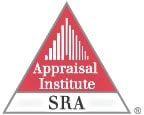This blog post was originally written 11/25/2018, and updated 08/05/2022
Measurements – Easy Pre-Listing fix to Avoid a Potential Future Headache
I have been an appraiser in the Lubbock area for a little over 18 years now. One source of problems I have seen prior to a purchase closing is when the sq.ft. advertised on the MLS is different than the actual sq.ft. of the home – how does this happen? More often than not, the local Appraisal District is used as the source for sq.ft.. While they aren’t always wrong, when they are wrong this can cause some issues in more than one way. In this blog post, I want to talk about how using the wrong sq.ft. on your MLS listing can negatively affect you (whether you know it or not).
While I believe the cost for measurements to be low enough to justify verifying the sq.ft. of the property for every listing, these are the most common “red flags” I see in the field – any additions, oversized garages, 2 story homes – these are times I would highly recommend getting measurements done to confirm the sq.ft. of the property is accurate.
Another thing to keep in mind – as of April 2022, appraisal reports going to Fannie Mae are required to be measured using ANSI standards. This is going to include most financed transactions. Appraisers now have standard to use, while no one else in the Real Estate industry does – builders, county assessors, realtors, insurance agents.
What source is your agent using, and what standard are they using?
Property Measures Out as Expected
This does happen and that is great! You have one less thing to worry about.
Property Being Sold Measures Out to Less Than the Expected Square Footage
This is the one that can cause the most obvious issues. My experience has shown me that price per sq.ft. is heavily relied on to price homes (it is not a valuation technique, but I will save that topic for a later blog post) – if a home is being priced based on 2 numbers (the sq.ft. of the home and a “price per sq.ft.” of a neighborhood), the sq.ft. of the home being accurate would be an important factor. This doesn’t always seem to be the case; the following are a sample of notes taken directly from MLS listings currently active/under contract or sold found on the Lubbock MLS (some **** used as to not indicate a specific listing):
Sq Ft was taken off of *** CAD. If important to you, have measured.
Square footage is not guaranteed so if important please get measured.
Square footage is different from the CAD, square footage is from appraisal when he bought it. If this is important, buyer might measure.
Measure if footage is important.
Sq footage is per tax records and rooms were laser measured. If important to your buyer please measure
Sq.Ft is per seller measurements after home was added on several years ago. If sq ft is important to your buyer, please measure.
Agent nor seller guarantee square footage if important to your buyer please measure.
Sq footage is wrong in LCAD. Closer to ****** but measure if exact sq footage is important.
Past seller square footage showed over 3,500 square feet. Please make your own measurements, but it may be larger than advertised.
Sq Ftge Amount is based on home plus the added shop. Not just based on house alone
Buyer to confirm square footage. Multiple additions made to property therefore unsure what the CAD measured.
Broker does not warrant or guarantee square footage.
When is sq.ft. NOT going to be important to a buyer? In my experience, it is one of the qualifying characteristics a buyer will give their agent when finding potential homes to view (bedroom/bath count, square footage, car storage, etc.).
I even came across one listing that stated the owner measured home (source of sq.ft. for the listing). In private comments on the listing it goes on to state that the last time the property was listed it was listed 141 sf larger than what the owner measured, and that CAD shows it to be 287 sf smaller than the owner measured. These are significant differences! I would say a professional needs to be hired to determine the correct sq.ft. to list the home.
Appraisal Districts measurements were never intended to be used as the primary source for sq.ft. for real estate professionals, and yet it is the most used source on our local MLS today. As of the revision/update of this blog post today, pulling all active SFR listings in Lubbock built prior to 2020 (new construction excluded as they will use builder as the source) :
26 of 383 site “Appraiser” – should be a reliable source; how old are the measurements? What standard did they use?
15 of 383 site the “Builder” – should be a reliable source; were there any changes to the plans? What standard is used?
22 of 383 site “Measured” – should be a reliable source, however, who measured it? What standard did they use? Did the homeowner measure it? The Listing Agent? The Neighbor?
36 of 383 site “Other” – what was the source? This one makes no sense, and in my opinion should not be an option on MLS.
17 of 383 site “Seller” – what was their source? Did they measure it? Are they including sunroom? What measuring standard did they use?
76 of 383 site “Tax Data” – this means the MLS copied the sq.ft. directly from the Appraisal District tax data. Is the tax data correct?
191 of 383 site “Tax Data, Not Auto Populated” – this means LCAD was used, but for some reason did not copy over directly. Did the agent get all the additions? Did they add anything that doesn’t belong?
I have measured homes that the appraisal district shows a basement on that does not exist. I have seen homes with basements that the appraisal district does not know exist. I have measured new construction homes that the appraisal district was off on that weren’t more than a couple years old. I have seen the MLS copy over sq.ft. and include the basement and other instances where the basement was left off. The appraisal district measurements are accurate enough for their purposes — are they accurate enough to depend on when listing or purchasing the largest asset you will sell or buy in your lifetime?
Unfortunately, I appraise homes that fall victim to this easily avoided piece of misinformation – sq.ft. was wrong in the MLS, home was priced too high based on this misinformation. This leads to having to renegotiate the original terms of the contract – good for the buyer that they are not paying for more sq.ft. than they thought, but bad for a seller that had an expectation set for the closing price of their property.
One example of this comes to mind of a time I saw the LCAD used as a source and gave a combined sq.ft. for the home including the above grade Sq.Ft. and the basement – problem was, the home didn’t have a basement, and the above grade was incorrect too. The home actually measured almost 400 sq.ft. smaller than advertised – this isn’t the first time I have seen something like this, and certainly won’t be the last.
Property Measures are Larger than Advertised on the MLS
Great! Right? Depends on which side of the transaction you are on. For the buyer, that is fantastic news. They just bought a house that is bigger than they thought without having to renegotiate a higher price (the contract would only be renegotiated when appraised value is below contracted price, not above, as the appraisal only protects the buyer interests due to being in line with lender interests – neither want to overpay).
For the seller? They will probably never know about this, the appraisal is not completed for them – they will go on to their next home never knowing that the home was underpriced with the wrong sq.ft. information, never knowing that they probably left some money on the table.
An example comes to mind where I appraised a home that had the sq.ft. listed per LCAD and the house measured to be about 10% larger. As a result, the appraisal came in about $10,000 higher than the contract. Because the appraisal is done for the lender, who is lending money to the buyer, no one is stopping this transaction to let the seller know they are selling the home too low – the transaction is only stopped if they are selling the house above the appraised value.
What to Do – the Easy Fix
Call me – I have personally measured thousands of homes over the past 18 years. Measurements are typically easy to fit into the schedule, and the time to turn them back over to you very quick. They will not add any significant time to getting your home listed on the MLS and can be done while you ready your home for the listing. Pricing is inexpensive – it is based on the size and complexity of the home being measured. If you are listing soon, or currently listed and would like to verify the sq.ft. of your home that is listed, give me a call for a quote.
Cash buyers – getting the house you are about to purchase measured is the minimum you should do. Make sure you are getting the sq.ft. you are paying for.






